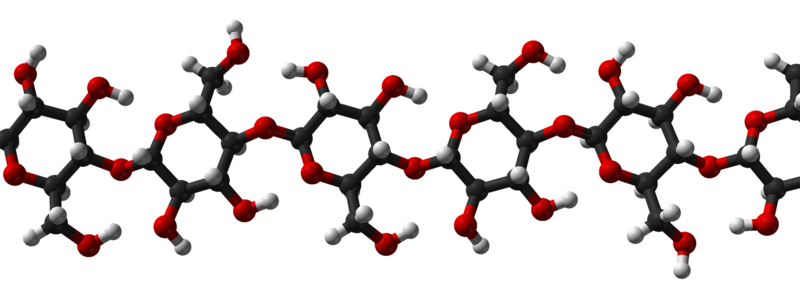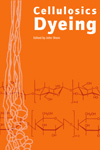Cellulose is the main fiber that plants are made of. All plants contain cellulose. Fibers that contain cellulose include the most familiar clothing fibers: cotton, linen, and rayon. They also include more uncommon plant-based textile fibers, such as bamboo (which is usually rayon), hemp, lyocell (Tencel), and ramie. The only plant-based textile fiber that is not cellulose (or a mixture of cellulose and lignen) is the soy protein fiber sold under the name "Soy Silk".
There are several different types of dyes that work well on cellulose.

As described in the Encyclopedia Britannica article on cellulose, 90% of the mass of cotton is cellulose, while wood, which is stiffened by another large molecule, lignin, is about 50% cellulose.
 The best reference I've found is the 1995 book Cellulosics Dyeing, edited by John Shore. It can be purchased directly from the Society of Dyers and Colourists, in the UK, for £32 plus shipping (ISBN 0 901956 68 6).
The best reference I've found is the 1995 book Cellulosics Dyeing, edited by John Shore. It can be purchased directly from the Society of Dyers and Colourists, in the UK, for £32 plus shipping (ISBN 0 901956 68 6).
 Back to list of FAQs
Back to list of FAQs
Last updated: February 15, 2010
Page created: October 30, 2009
Downloaded: Monday, December 08, 2025
All of the pages on this site are copyright ©1998‑2025 Paula E. Burch, Ph.D.